Featured Articles
BATTLES
I think part of the reason I love fighters is because they’re warriors, modern-day gladiators who do things most of us can’t or won’t. Boxers fight battles. And while winning battles is very important, life teaches us battles are usually remembered less by being won and more by how they were fought. That’s probably the reason more of us gravitate toward brawlers like Arturo Gatti and Mickey Ward than sweet scientists like Guillermo Rigondeaux and Erislandy Lara. That isn’t to say the latter two gentlemen haven’t been in battles. They have. Rigondeaux’s Round 11 TKO over Hisashi Amagasa and Lara’s Round 10 TKO over Alfredo Angulo were riveting slugfests with knockdowns galore. But the styles of Rigondeaux and Lara are geared more toward winning battles than fighting the good fight. Gatti and Ward didn’t just want to win their battles. They wanted to fight.
One of the most popular battles in the celebrated history of Texas was the Battle of the Alamo in 1836. It was a pivotal event in Texas’ revolution from Mexico. After holding off a reported 2,500 soldiers in the mission-turned-fortress for 13 days, the Texans fell. The Mexican troops, under the direction of President General Antonio López de Santa Anna, launched a final assault on the Alamo’s 182 defenders. They left no survivors. Santa Anna’s cruelty, along with his exponential number of troops, led to the massacre of an entire Texas garrison. It was a slaughter. Almost everyone there died that day in battle or were killed after their surrender, but many in Texas still claim the soul-crushing loss, one where Texas soldiers killed as many as 600 of the Mexican troops as well, as a great and important historical moral victory over the tyranny and cruelty of the time period.
The other night I was thinking about all of this, and I just finally told my wife.
“I’m sick of life,” I said.
“I know,” she replied. “But you should think of life as a battle. That’s what life is really. It’s a battle.”
There is no doubt Rachel was referring to some king of biblical philosophy in her answer. One of my wife’s greatest interests in life is theology, and most of her thoughts and actions are steeped the teachings and traditions of the Church.
But I wasn’t feeling particularly moved by it at the time.
“I’m sick of the battle though,” I admitted after a long pause.
“You’re supposed to be. Battles are not good.”
While our society props them up as glorious pursuits, the truth of things like wars and battles is surprisingly horrid. My father was drafted into the military when he was just 18 years old. He was flown to Vietnam on Christmas Eve so that he could kill people. Since his return, he wakes up in the middle of the night smelling Napalm. He has flashbacks to when he learned how to kill other human beings with knives so they couldn’t make a sound while they died and also wouldn’t spurt blood all over him. I’ve seen my father shoot a wild turkey with a pistol running full speed in a crosswind from 30 yards away. If you ask him what he did during the war, he’ll simply tell you he was debriefed. That’s his way of saying he can’t tell you. But if you ask him when he’s drunk, which is often, he’ll tell you he did all the bad things everyone says happens during wars but nobody ever admits to doing. That or he’ll just stare out into the abyss of the night sky and not talk back to you at all.
Boxing probably isn’t a good thing. There are many horrid things that have happened in our sport. I’m sure we don’t even know a pittance of them. The media can’t really tell you what they don’t know, and most of us aren’t really asking that many important questions. Even when we try, we probably ask the wrong people the wrong things, and even when we get it right and ask the right people the right things it doesn’t mean they have to answer. Moreover, the sport just seems to attract the most dysfunctional group of human beings possible. I’m not talking about the fighters. I’m talking about everyone else: the promoters, the managers, the television producers, the writers, the fans—everyone.
We are all horrible. But that’s probably why we love boxing.
***
I see him in the middle of the street as I’m walking. It’s another gray bird . He’s upside down and fluttering his one good wing. I walk up to him slowly, wondering if today I’ll see another miracle. I pick the bird up carefully off the hard pavement because I know he’s in pain. I find a nice, soft place to lay him nearby in the grass. The sun is out but it’s overcast so he will be comfortable. There’s a nice little place in the lawn that looks like it was made just for him, just for this very moment. The blades of grass are mashed down in one little spot like it’s a little bed for him, and the luscious green stalks around it act as little arms to hold him close.
I don’t really know what to say or do, so I say some prayers. Last time I said prayers in front of a sick looking bird, he got up and flew off. But this one just watches me with one eye as I pray. He’s breathing at a measured pace. I don’t know what to do. He looks so very tired.
I tell him that I love him. I think if I were lying there all alone, I’d want someone to tell me they love me, even if I had never seen them before. I think I would find some comfort in that. So I tell him I love him. He just stares at me and breathes at a measured pace. I know he can’t understand me, but I pretend like he can.
I tell him I love him and I tell him that it’s okay. It’s okay, I say. Everything has to die. He stares at me and breathes at a measured pace.
I’m crying now. But he stares and I pray and I tell him I love him and that it’s okay because everything has to die. Everything. His breaths draw shorter and shorter. He looks peaceful but also terrified. He tries one more time to rise. He rolls over to his side and flutters his one good wing with all his remaining might.
But nothing happens. He flutters and flutters and flutters and then stops. His breaths grow shorter and more labored. He stares at me. I tell him I love him and he stares at me. He stares at me and dies.
We romanticize boxing as if it isn’t what it is. I know I do. I look at boxing as a kind of art. To me, it is not just two men punching each other until someone either falls down on the ground or three people sitting around the ring confer and tell us which one punched the other man the best. To me, boxing is something more. It’s poetry. It’s science. It’s religion. It’s everything interesting in the world all wrapped up in one conveniently priced package, a brutally honest one full of people who habitually tell each other lies but everyone is okay with it.
Here’s the worst part. I know all of this in my head, but I still love boxing in my heart, and all the people involved in it, even the ones I hate. And I still love the fighters for silly and naïve and idyllic reasons. I love them because they fight battles. I love them because they’re warriors, modern-day gladiators who do what most of us can’t or won’t. Boxers fight battles. They might be needless battles. They might be horrid battles. But at least they’re fighting.
Maybe Rachel is right. Maybe we do all fight battles. But if it’s true, most of us pretend we don’t. And if we do, we don’t all get to see each other fight them on the grand stage of the blue boxing mat. Some of us struggle with addiction. Others with suicidal thoughts. Some of us are lonely. Some of us are mean. Some of us are trapped in failed marriages with kids they never wanted. Some of us would do anything to hear someone say “I love you” or call them “Mommy” just one time. Some have committed heinous crimes. Others have always been the victims.
All of our lives are horrible.
But everyone is battling. Whether we admit it to ourselves or not, we are all that little bird struggling down there in the grass. We are all born to be fighters, but only some of us choose to fight. I love fighters because they choose to fight. I’m not certain their reasons are just and valid. I’m not sure if boxing is good or bad or if it should exist or even be eradicated. I don’t really care so much about any of it either. I just know it’s nice sometimes to see someone battle, to see some broken-winged creature fluttering around there on the ground doing its best to fly right up until its final breath—to see someone winning the moment, even when they end up losing the next.
-
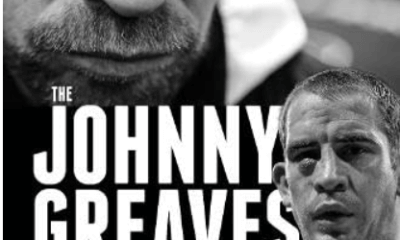
 Featured Articles3 weeks ago
Featured Articles3 weeks agoThomas Hauser’s Literary Notes: Johnny Greaves Tells a Sad Tale
-
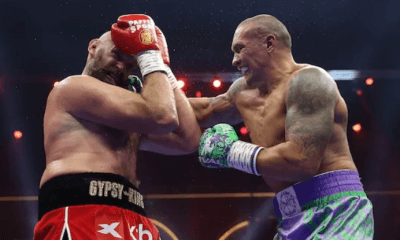
 Featured Articles2 weeks ago
Featured Articles2 weeks agoBoxing Notes and Nuggets from Thomas Hauser
-
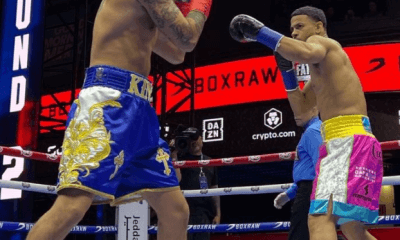
 Featured Articles4 weeks ago
Featured Articles4 weeks agoRolly Romero Upsets Ryan Garcia in the Finale of a Times Square Tripleheader
-
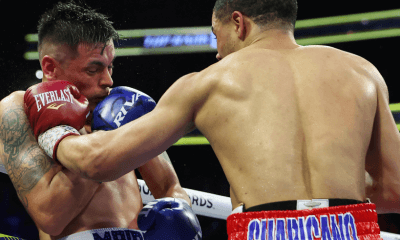
 Featured Articles4 weeks ago
Featured Articles4 weeks agoUndercard Results and Recaps from the Inoue-Cardenas Show in Las Vegas
-
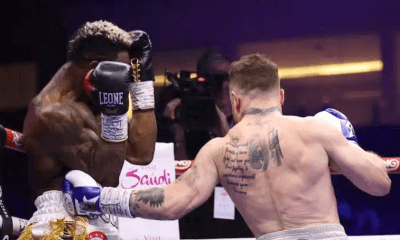
 Featured Articles4 weeks ago
Featured Articles4 weeks agoCanelo Alvarez Upends Dancing Machine William Scull in Saudi Arabia
-
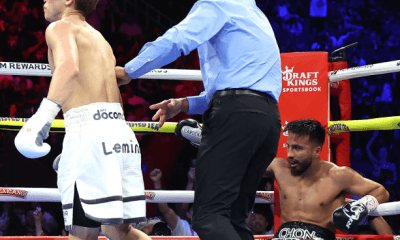
 Featured Articles4 weeks ago
Featured Articles4 weeks agoBombs Away in Las Vegas where Inoue and Espinoza Scored Smashing Triumphs
-
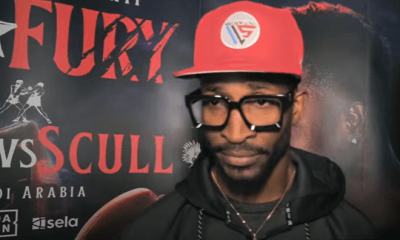
 Featured Articles4 weeks ago
Featured Articles4 weeks agoArne’s Almanac: The Good, the Bad, and the (Mostly) Ugly; a Weekend Boxing Recap and More
-
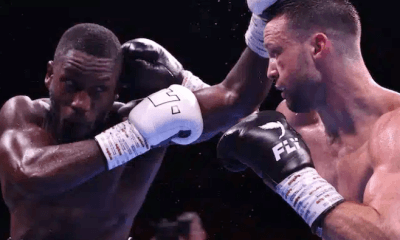
 Featured Articles1 week ago
Featured Articles1 week agoEkow Essuman Upsets Josh Taylor and Moses Itauma Blasts Out Mike Balogun in Glasgow



















